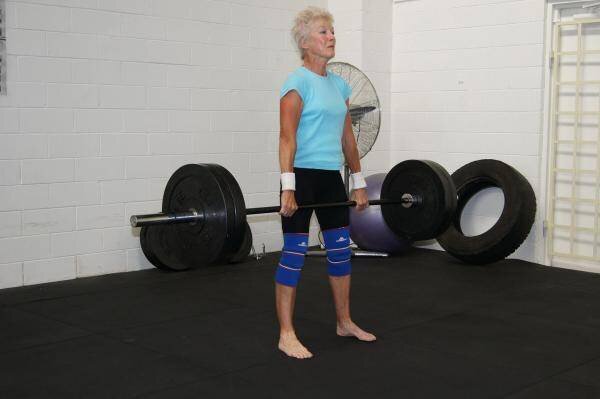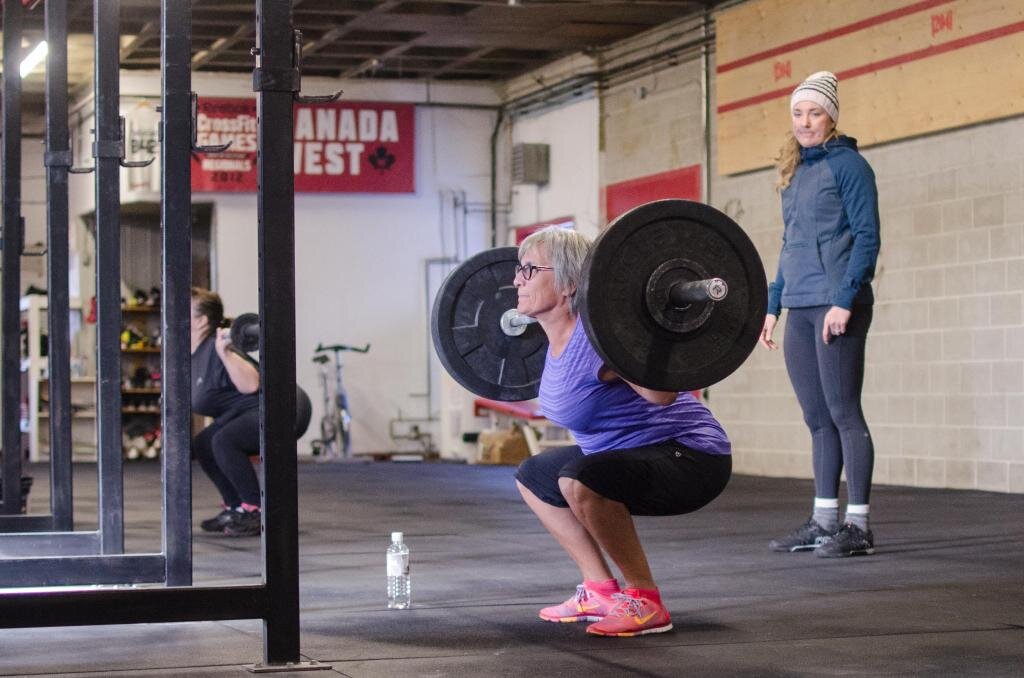This week’s blog discussing Bone Health was written by our Final Year Physiotherapy Student Kathryn Melvin, excellent work Kathryn !!!!
Bone health and particularly Osteoporosis is a health condition gaining interest in recent years. Osteoporosis is characterized by loss of bone density, in which bones become progressively porous, and are at increased risk of fracture.
Osteoporosis is the most common bone disease worldwide. It is estimated that one in two women over the age of 50 and one in four men will break a bone because of osteoporosis (National Osteoporosis Foundation)
What causes Bone Loss?
Bone tissue is constantly being absorbed and replaced throughout the life span. Bone mass decreases when the rate of absorption exceeds the rate or production. A way to visualise this is to picture the bone like a sponge. As the condition progresses, the millions of tiny holes in the bone gradually grow, leaving the bone porous, brittle, and susceptible to fracture.
There are many contributors to the loss of bone mass. These include:
Age 50 years and older
Menopause
An Inactive Lifestyle
Lack of Calcium and Vitamin D in the Diet
Alcohol (>3 drinks/day)
Smoking
Caffeine (>4 cups/ day)
Caucasian and Asian
Family history of osteoporosis or fragility fractures
Effects:
The loss of bone density over time can also result in back pain, a loss of height, and a more kyphotic or “hunched” posture. Yet osteoporosis is often referred to as a silent disease as frequently, no symptoms are present until bone loss/weakening has advanced enough to result in a fracture.
According to Irish Osteoporosis society:
Up to 30% of men will die in the year following a hip fracture
More women die from complications of osteoporotic fractures, than from a combination of all cancers of the ovary, uterus and cervix
Approximately 15% of people with osteoporosis are diagnosed
Peak bone mass is met at the average age of 20. Those who develop a low bone mass prior to this time, have a high chance of developing osteoporosis
Thus, being conscious and attentive to bone health is important for all ages.
Taking Action:
Fortunately, there are many lifestyle choices which can influence bone health. These include:
1: Adequate dietary intakes of calcium and vitamin D.
Calcium and vitamin D are important for the prevention and treatment of osteoporosis. Bone is a major store of calcium and phosphate. Calcium-rich foods include milk, cheese, almonds, broccoli, kale, cauliflower, oranges and canned fish.
You can calculate both your current and your recommended calcium intake as per The International Osteoporosis Foundation via https://www.iofbonehealth.org/calcium-calculator.
Vitamin D is essential for the absorption of calcium. Vitamin D is manufactured in the skin when it is exposed to the sun. Approximately one in eight adults over 50 in the Republic of Ireland are Vitamin D deficient (Laird et al., 2017). Fatty fish (tuna, mackerel, salmon), cheese, egg yolks and foods fortified with vitamin D, like some dairy products, orange juice, soymilk, and cereals can increase your Vitamin D intake.
2: Reduction in alcohol and caffeine intake and smoking cessation.
Alcohol, caffeine and smoking affect calcium absorption which decreases peak bone mass and bone density. Decreasing your consumption can help to increase bone health.
3: Exercise
While there is often a perception that exercise may be dangerous and increase the risk of a fracture in osteoporotic patients, it is widely recommended for increasing bone health.
High impact exercises increase mechanical bone loading. This increases the peak bone mass, which reduces the risk of fracture (Pagnotti et al., 2019, Troy et al., 2018).
In other words, similar to muscles, bones become denser and stronger when we load and work them.
Weight-bearing and muscle strengthening exercises are both effective at building and maintaining bone density.
High Impact Weight Bearing Exercises.
Examples of high-impact weightbearing activities are:
Jogging, dancing, skipping, basketball, football, running, jumping, landing, stair/ step climbing, tennis.
These exercises are dynamic, and they exert a high force on bone. This helps to increase and maintain bone density and strength.
Resistance Training
Resistance exercises include:
Lifting weights, dead lifts, overhead press, squats, using resistance bands or your own body weight.
These exercises are effective at strengthening bones, joints and muscles, which will be effective in reducing pain, increasing global strength and function.
Falls Reduction:
Often there is a fear instilled in those with osteoporosis, particularly the elderly, that even everyday tasks place them at great risk of falling and fracturing a bone. While it is true that they are a greater risk, exercise can increase strength, balance, endurance, and consequently independence. This ultimately reduces risk of falls and fractures.
Exercise programs have been proven to reduce the number of falls in elderly people by 23% (Sherrington et al., 2019) Incorporating exercises which can further challenge your balance and coordination are recommended to decrease risk of falling.
Beneficial Exercises:
The following Exercises are high impact, weightbearing, or resistance/strengthening exercises. These can be incorporated to:
Load/ Exert force on bone- helping to increase and maintain bone density
Strengthen bones, joints and muscles
Increase balance, coordination and motor control.
Thus, these exercises may reduce improve bone health, reduce the risk of fracturing a bone and reduce the risk of falling.
8-12 Repetitions X 2 Sets is recommended for exercises 2-8.
Skipping
Skip for 5 minutes. Skip on one leg if capable.
Walking Lunge
Stand with a weight in either hand.
Keep upright, with your shoulders back and chin up looking ahead.
Step forward with one leg, lowering your hips until both knees are bent at about a 90-degree angle.
Push off your hind foot to lunge forward to the front of your other foot.
Lower hips and Knees to 90 degrees.
Repeat
Deadlift
Stand with weighted barbell at your feet.
Bend at the knees, keeping your back straight and your chest up, lower yourself to grab the bar with a shoulder-width grip.
Tighten your gluteal muscles to stand up with the weight.
Repeat.
Squat
Stand with Feet hip distance apart
Hold a weight/ kettlebell to your chest.
Keeping your chest upright, bend the knees and lower into a squat. Push back as if you are reaching to sit into a chair behind you.
Stop when your knees are at 90-degree angles.
Contract the glutes and legs to drive up into a standing position.
Repeat.
Jump Squats
Begin in a Squat position with feet hip distance apart and knees and hips at approximately 90 degrees.
Jump up as high as you can. Land in the same squat position
Repeat
Single Leg Squat
Stand on one leg with chest upright. Rest your hand on a chair in front of you to support your balance if needed.
Lower yourself back into a squat position, as far as you can control while maintaining your balance.
Contract glutes to straighten up into starting position
Repeat.
Push Ups
Begin in a plank position, perform on knees if necessary
With your palms on the floor, bend your elbows to lower your body toward the floor as far as you can control
Quickly push up to starting position.
Repeat.
Knee Drive on Step
Stand with step in front of you.
Step up on the step to quickly bring your other foot in front with the hip and knee at 90 degrees
Attempt to hold for 3 seconds
Repeat.
How Often Should I Exercise?
Weight-bearing and impact exercises are recommended for a total of 30 minutes per day, five to seven days per week.
Muscle-strengthening exercises are recommended two to three days a week. 8-12 repetitions X 2 sets is recommended.
Aim for one strengthening exercise for each major muscle group.
(National Osteoporosis Foundation, 2013.)
Note: Watson et al., 2017 found that completing High Intensity Resistance and Impact Exercises for only 30 minutes, twice weekly was effective at enhancing bone, as well as stature and functional performance in postmenopausal women with low to very low bone mass.
Thus, if you find it difficult to find the time for exercise, even 30 minutes twice a week can make a difference.
Are there any precautions I should have before exercise?
If you have been diagnosed with significantly low bone mass and/ or have suffered previous vertebral fracture, caution should be made to avoid activities that require reaching far and rapid twisting motions.
However, exercise is key to maximising your bone health and reducing risk of falls. It should be a component of your management plan.
We are happy to answer any questions , you can email us info@mcenteephysio.com or give us a call on 0469062265
Take Home Message:
Everyone should make steps to optimise their bone health, no matter their age.
Osteoporosis can cause devastating effects but there are simple lifestyle changes that can prevent and manage the condition.
Attempt to increase calcium and vitamin D in your diet, and decrease consumption of alcohol, caffeine. Reduce/quit smoking.
Exercise should be emphasised, NOT avoided. Exercise can decrease both risk of fracture and risk of falls. Inactivity is more dangerous.
High Intensity resistance and impact training can make positive changes if carried out for as little as 30 minutes, two days a week. However, 3-7 times per week is optimal.
References:
International Osteoporosis Foundation. Dietary Recommendations. Available at https://journals.sagepub.com/doi/10.2217/WHE.14.40 (Accessed on 30/1/2020)
Irish Osteoporosis Society. Osteoporosis Guidelines for Health Professionals. Available at URL: http://www.irishosteoporosis.ie/images/uploads/Osteoporosis-Guidelines.pdf (Accessed on 30/1/2020)
Laird, E., O’Halloran, A.M., Carey, D., Healy, M., O’Connor, D., Moore, P., Shannon, T., Molloy, A.M. and Kenny, R.A., 2018. The prevalence of vitamin D deficiency and the determinants of 25 (OH) D concentration in older Irish adults: Data from The Irish Longitudinal Study on Ageing (TILDA). The Journals of Gerontology: Series A, 73(4), pp.519-525.
National Osteoporosis Foundation (2013). Recommendations on Exercise for your Bone Health. Available at URL: https://cdn.nof.org/wp-content/uploads/2016/02/Exercise-for-Your-Bone-Health.pdf (Accessed on 30/1/2020)
National Osteoporosis Foundation. What is Osteoporosis and What Causes it? Available at URL: https://www.nof.org/patients/what-is-osteoporosis/ (Accessed on 29/1/2020)
Pagnotti, G.M., Styner, M., Uzer, G., Patel, V.S., Wright, L.E., Ness, K.K., Guise, T.A., Rubin, J. and Rubin, C.T., 2019. Combating osteoporosis and obesity with exercise: leveraging cell mechanosensitivity. Nature Reviews Endocrinology, 15(6), pp.339-355.
Sherrington, C., Fairhall, N., Wallbank, G., Tiedemann, A., Michaleff, Z., Howard, K., Clemson, L., Hopewell, S. and Lamb, S. (2020). Exercise for preventing falls in older people living in the community. A Cochrane Systematic Review. Available at URL https://www-cochranelibrary-com.ucd.idm.oclc.org/cdsr/doi/10.1002/14651858.CD012424.pub2/full (Accessed on 30/1/2020).
Troy, K.L., Mancuso, M.E., Butler, T.A. and Johnson, J.E., 2018. Exercise early and often: effects of physical activity and exercise on women’s bone health. International journal of environmental research and public health, 15(5), p.878.
Watson, S.L., Weeks, B.K., Weis, L.J., Harding, A.T., Horan, S.A. and Beck, B.R., 2018. High‐intensity resistance and impact training improves bone mineral density and physical function in postmenopausal women with osteopenia and osteoporosis: the LIFTMOR randomized controlled trial. Journal of Bone and Mineral Research, 33(2), pp.211-220.










